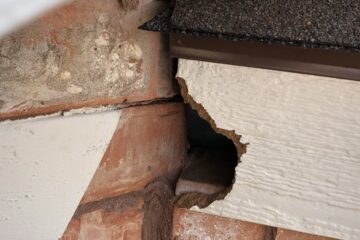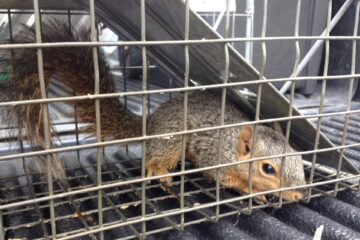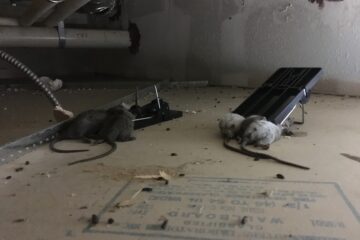Garages are common areas where rodents seek shelter and food sources, making them susceptible to rodent infestations. Rodents can cause damage to stored items, vehicles, and the garage structure itself. Rodent-proofing your garage is crucial in preventing these unwanted pests from entering and establishing nests. In this article, we will discuss effective tips and techniques to help you rodent-proof your garage.
- Seal Entry Points:
Inspect your garage for any gaps, cracks, or openings that rodents can use to gain access. Pay attention to areas around doors, windows, vents, pipes, and electrical conduits. Use weatherstripping, door sweeps, and caulk to seal these entry points and prevent rodents from entering. Repair any damaged screens on windows or vents.
- Install a Garage Door Threshold Seal:
Install a garage door threshold seal at the bottom of your garage door. This seal creates a barrier that prevents rodents from squeezing under the door. It also helps to keep out dirt, debris, and water.
- Secure Garage Door Bottoms:
Rodents can squeeze through small openings at the bottom corners of garage doors. Install rodent-proof garage door seals or add metal flashing to reinforce these areas and prevent entry.
- Seal Cracks and Crevices:
Inspect the walls and flooring of your garage for cracks and crevices. Use a suitable sealant or mortar to fill in these gaps, leaving no openings for rodents to access. Pay attention to areas where pipes, cables, or wires enter the garage, as rodents can use these as entry points.
- Protect Cable and Wire Openings:
Seal any gaps or openings around cables and wires entering the garage. Use expandable foam or caulk to close off these spaces and prevent rodents from entering through these routes.
- Store Items in Rodent-Proof Containers:
Rodents are attracted to stored items, such as cardboard boxes, paper, and fabric. Store items in plastic or metal containers with tight-fitting lids to prevent rodents from accessing and nesting in them. This also helps keep your belongings safe from damage.
- Keep the Garage Clean and Organized:
Maintain a clean and organized garage to reduce potential hiding spots and food sources for rodents. Regularly sweep the floor to remove debris, crumbs, and spills. Store pet food, birdseed, and other potential rodent attractants in sealed containers.
- Store Trash Properly:
Properly store trash in sealed bins with tight-fitting lids. Regularly empty the bins to prevent odors and minimize attractants for rodents. Keep the area around the bins clean and free of debris.
- Reduce Moisture:
Rodents are attracted to moisture, so address any sources of water or excess humidity in your garage. Repair leaks, fix plumbing issues, and ensure proper ventilation to minimize moisture buildup.
- Trim Vegetation and Maintain Landscaping:
Trim back any overhanging vegetation near your garage. Trees, bushes, and vines can provide easy access for rodents. Maintain a clear zone around the garage to reduce potential nesting sites and hiding places.
Rodent-proofing your garage is essential in preventing infestations and protecting your belongings. By following these tips and techniques, you can significantly reduce the risk of rodents entering and nesting in your garage. Sealing entry points, securing garage door bottoms, storing items in rodent-proof containers, maintaining cleanliness, and minimizing attractants are key preventive measures. Remember to regularly inspect and maintain your garage to ensure it remains rodent-proof. Taking these steps will help keep your garage free from rodents and protect your property from damage.




